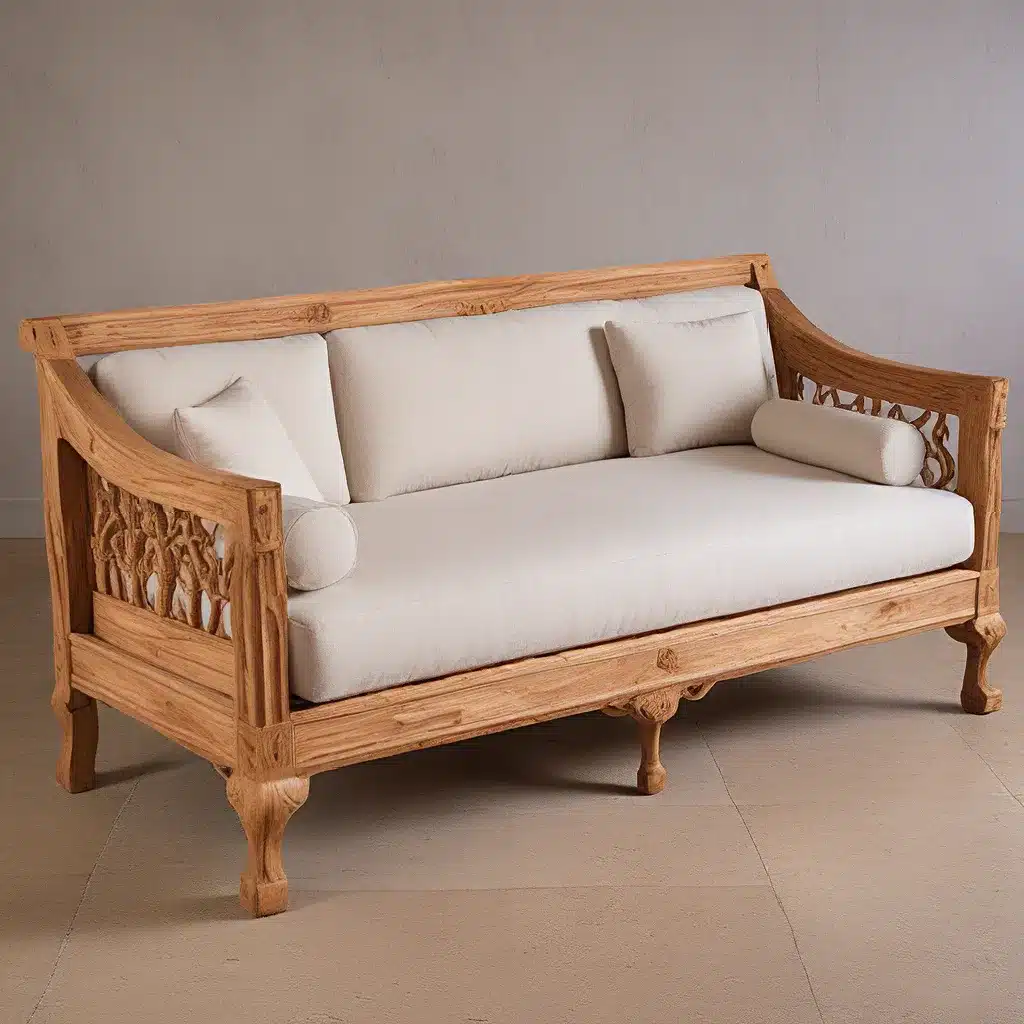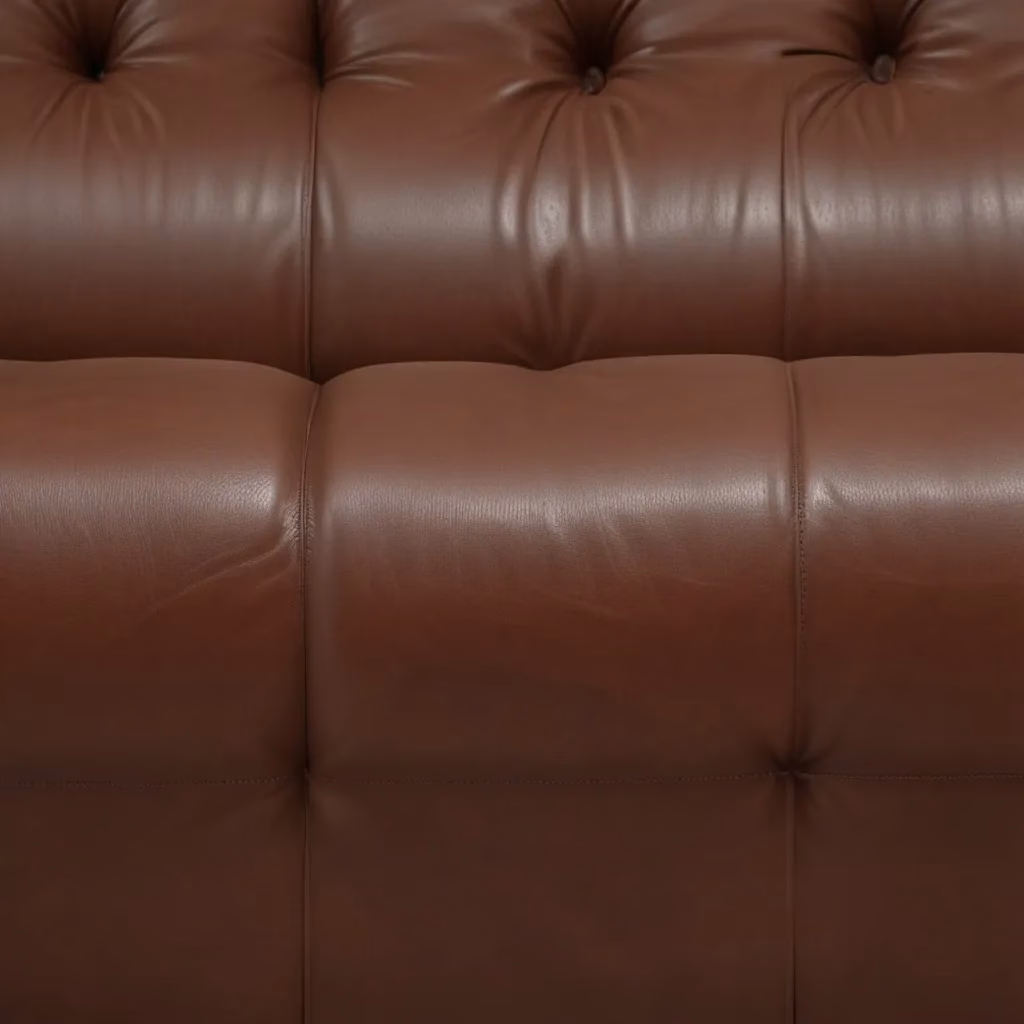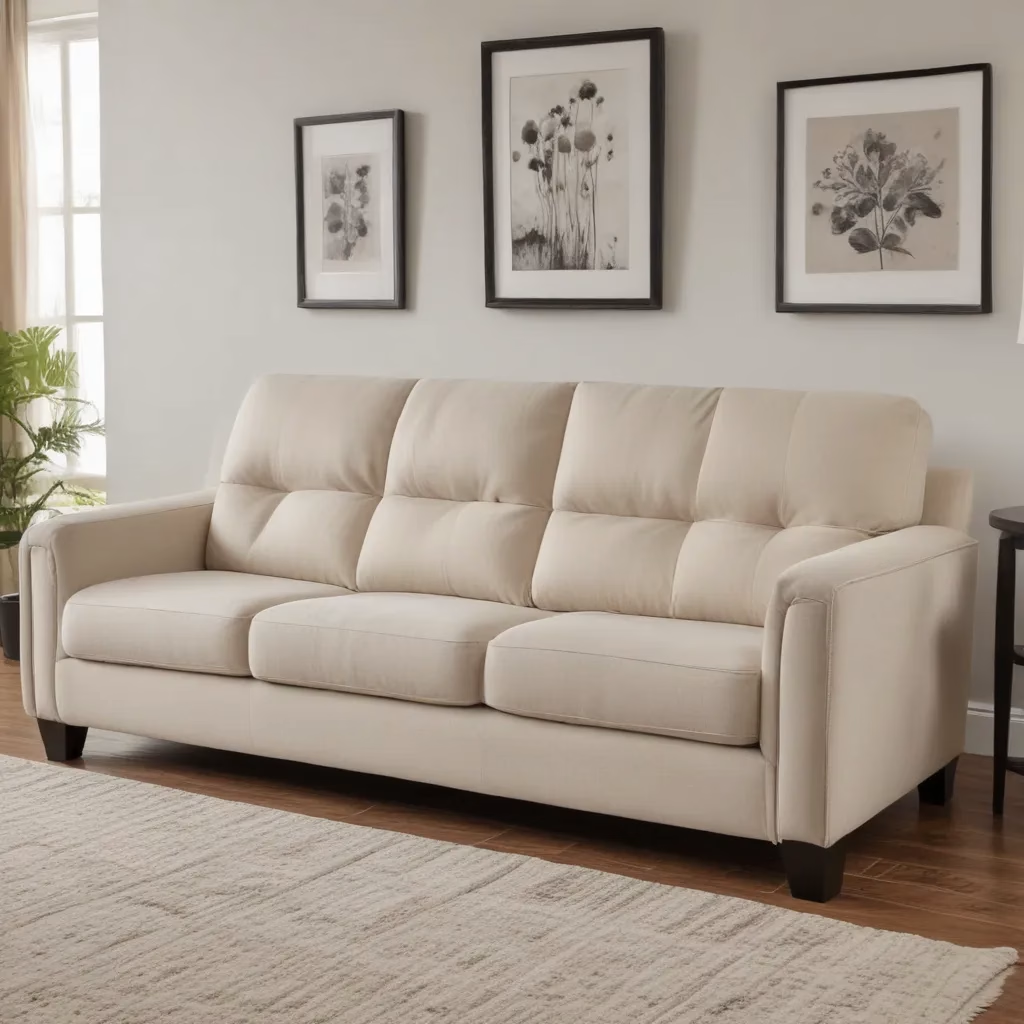
Unlocking the Secrets of Sofa-Making
As a passionate DIY enthusiast, I’ve always been captivated by the idea of crafting my own furniture. But when it came to tackling a project as intricate as building a sofa, I’ll admit, I was a bit intimidated. After all, sofas are the centerpiece of our living spaces – they need to be not only visually stunning, but also incredibly sturdy and comfortable.
However, my curiosity got the better of me, and I decided to embark on a journey to uncover the secrets of handmade wooden sofa frames. What I discovered was a fascinating world of woodworking, upholstery, and engineering that challenged my preconceptions and ignited a newfound appreciation for the art of sofa-making.
The Wooden Frame: The Foundation of Comfort
At the heart of any sofa lies its wooden frame, the sturdy foundation that supports the cushions, springs, and fabric. As I delved into the world of sofa construction, I quickly realized that this wooden frame is no mere afterthought – it’s a meticulously crafted masterpiece that sets the tone for the entire piece.
Woodworkers carefully select high-quality hardwoods, such as oak or maple, for their durability and natural beauty. They then use a variety of joinery techniques, like mortise and tenon or pocket screws, to ensure the frame is strong and sturdy, able to withstand the rigors of everyday use.
But it’s not just about the materials and construction methods – the design of the wooden frame plays a crucial role in the overall comfort and aesthetic of the sofa. Contemporary designs often feature clean, minimalist lines, while traditional styles may showcase intricate carvings or ornate details.
Mastering the Springs and Webbing
The wooden frame may be the foundation, but it’s the system of springs and webbing that truly brings a sofa to life and ensures a comfortable seating experience. As I explored the world of sofa-making, I discovered that there are two primary methods of support: springs and webbing.
Springs, particularly the eight-way tied variety, are the gold standard for high-end sofas. These coiled springs are carefully positioned and interconnected, distributing the weight evenly and providing a resilient and responsive support system. On the other hand, webbing is a more cost-effective option, involving a series of semi-elastic bands woven across the frame.
While webbing may be the more budget-friendly choice, it’s important to note that it can wear out more quickly and may not offer the same level of comfort and durability as a well-crafted spring system. Factors like the frequency of use and the weight of the occupants can also play a role in determining the optimal support system for a sofa.
Upholstery: Bringing the Sofa to Life
With the wooden frame and support system in place, the final step in creating a handmade sofa is the upholstery. This is where the sofa truly comes to life, as the fabric, cushions, and trimmings transform the structure into a visually and tactilely appealing piece of furniture.
Upholsterers have a wealth of knowledge and skills, from selecting the right fabric and cutting it to the precise dimensions, to sewing the cushions and attaching the fabric to the frame. It’s a delicate and time-consuming process that requires patience, attention to detail, and a keen eye for aesthetics.
The choice of fabric can have a significant impact on the overall style and comfort of the sofa. Microfiber, for instance, is a popular option for its softness and durability, while leather can lend a sophisticated and timeless look. Ultimately, the fabric selection should be a reflection of the homeowner’s personal style and preferences.
The Challenges of DIY Sofa-Making
As I dove deeper into the world of sofa-making, I quickly realized that this is no simple task for the average DIY enthusiast. The specialized tools, intricate techniques, and meticulous attention to detail required can be a daunting prospect for those without extensive woodworking or upholstery experience.
Many hobbyists have expressed their struggles in finding reliable and comprehensive guides on how to build a sofa from scratch. The lack of detailed plans and step-by-step instructions can make the process feel overwhelming, leaving some to question whether it’s a viable project for the average DIYer.
However, with persistence, patience, and a willingness to learn, the challenge of creating a handmade sofa can be overcome. It’s a rewarding and satisfying journey that allows you to customize every aspect of your living room’s centerpiece, from the style to the level of comfort.
The Rewards of Handcrafted Sofas
As I neared the completion of my own sofa-making project, I couldn’t help but feel a sense of pride and accomplishment. Sure, it had been a long and arduous process, filled with trial and error, but the end result was a stunning and functional piece of furniture that I could truly call my own.
Sofa Spectacular understands the allure of handcrafted sofas and the unique value they bring to a home. By investing in the time and effort required to build a sofa from scratch, you’re not just creating a piece of furniture – you’re crafting a one-of-a-kind work of art that reflects your personal style and design sensibilities.
Moreover, the satisfaction of knowing that you’ve created something beautiful and functional with your own two hands is truly priceless. It’s a sense of accomplishment that can’t be replicated by simply purchasing a mass-produced sofa from a big-box store.
So, if you’re feeling inspired and up for the challenge, I encourage you to explore the world of handmade wooden sofa frames. Who knows, you might just discover a newfound passion for woodworking and upholstery, and end up with a stunning and comfortable sofa that you can proudly display in your living room for years to come.



